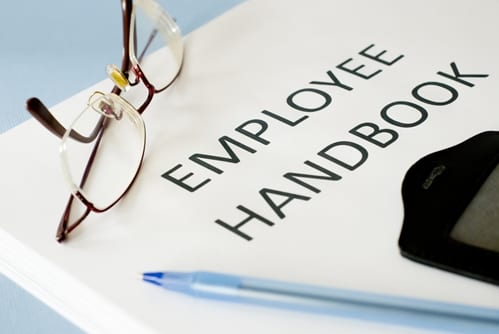
Developing a Handbook Employees Will Actually Read
Every firm needs to maintain an up-to-date handbook of policies and procedures so that staff is fully aware of expectations, and management has support when workers push back on or violate certain rules. How, though, do you make certain that all of your employees read this manual? Many businesses assume that merely distributing the documents and getting staff members’ confirmation signatures is enough. However, a 2014 survey by GuideSpark recently revealed that almost half of workers between the ages of 18 and 29 didn’t read their employee handbook, and 11 percent of them didn’t open it at all. Moreover, less than one-quarter of millennials surveyed found their handbook “very helpful.” The truth is, businesses must go above and beyond to make sure the information truly sinks in.
Here are some ways that employers can improve these manuals.
Ensure accessibility
In the GuideSpark survey, 36 percent of respondents admitted they didn’t know where it is anymore – which is obviously a major problem. While a paper copy is the traditional way to do things, an online copy can ensure the manual is always accessible, even if it’s accidentally tossed or misplaced. Business Management Daily noted that posting a digital copy online can also make it easy to update. The source recommended sending out a companywide email from HR whenever a revision or addition has been made to the handbook so that it doesn’t go unnoticed by employees. Then you can utilize online testing software to quiz staff members on the material and make sure it had an impact.
Highlight valuable points
When staff members are given lengthy reading materials, they may become overwhelmed and miss important information. The GuideSpark study revealed that 86 percent of workers believe benefits play a significant role in choosing to stay with an employer. Yet over half of millennials admitted they don’t fully understand their benefit options, and 56 percent said they wished their employers would better explain them. Keith Kitani, CEO of GuideSpark, suggested that employers leverage new technologies and communication channels, like mobile, video and social, to engage employees with this information. It’s also best to cover aspects that employees are particularly interested in, like paid holidays, vacations and sick day policies right in the first section.
Be clear-cut and concise
Every employee handbook should be written in terms that can be easily digested by staff members so as to prevent any misunderstandings. There’s no need to address every single contingency or potential scenario’s outcome. For example, while describing health care benefits, employers can leave out the details regarding coverage and deductibles, which will change frequently regardless. Instead, stick to generalities, which give management more flexibility in terms of dealing with specific unique situations that come up.

.svg)








Leave a Reply